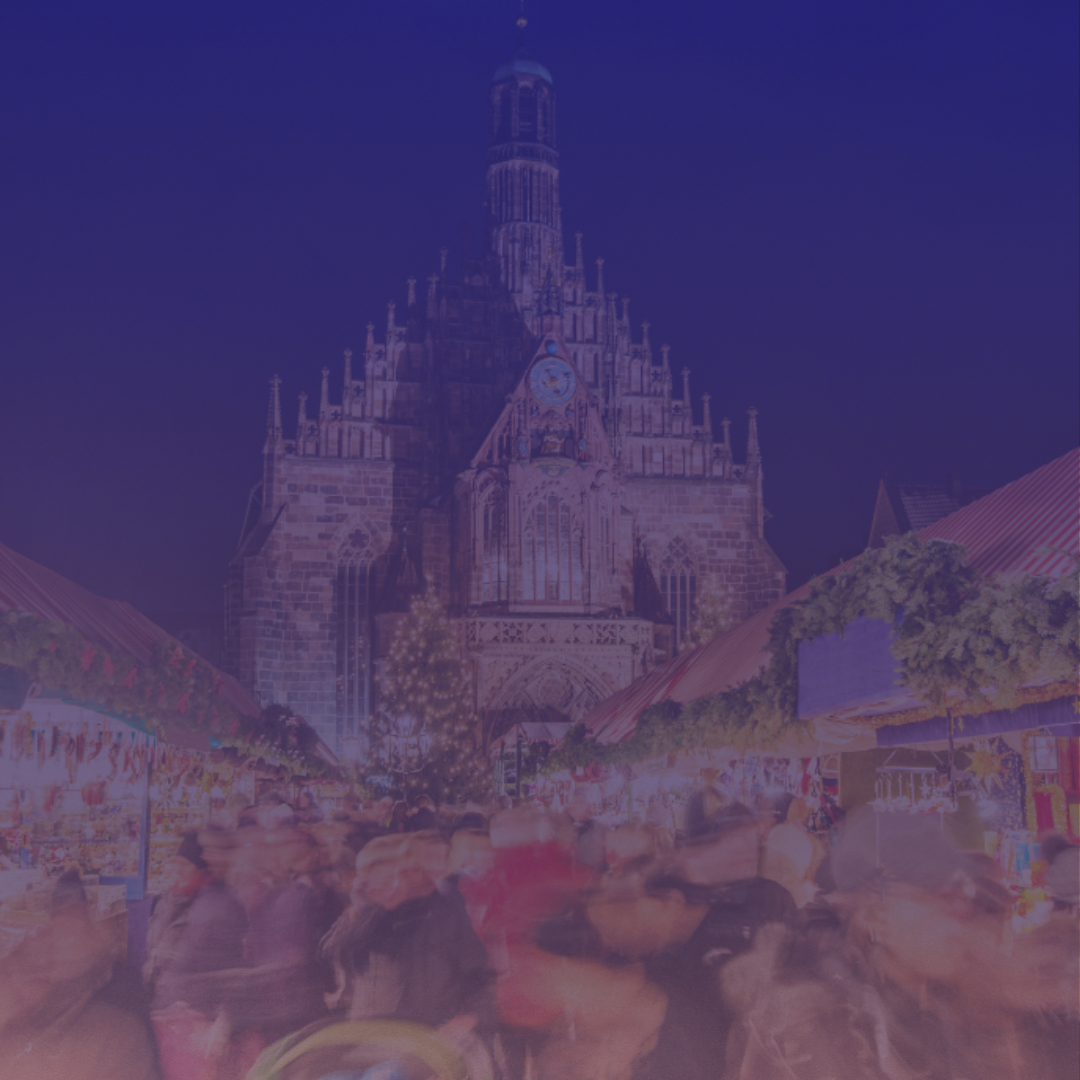
Written by: Maria Tsanova
Edited by: Cora Crew-Gee
Introduction
This article’s goal is to inspect in detail how the European Union (EU) measures the cultural and creative aspects of its cities, by giving tangible examples of up-to-date development of Mainz, Plovdiv, Nuremberg, and Athens. Culture and creativity are driving factors behind societal development and personal growth. In order for EU member states to coordinate efforts and establish a common framework of values, the Cultural and Creative Cities Monitor (the Monitor) was established in 2017. The Monitor is a benchmarking tool which works at a city level in order to provide a policy framework across Europe (European Commission, 2023, p. 3). It consists of three metric estimates: “a technical report, an online tool, and an annex containing the data used to construct the monitor itself” (European Commission, 2023, p. 3). The Monitor has followed the development of cities from 2015 onwards, with its most recent report in 2023 (European Commission, 2023, p.3).
Measuring Culture and Creativity
Information is collected about cities which are similar in terms of Gross Domestic Product (GDP) per capita, employment rates, and population size. The formed database distinguishes the three categories of Cultural Vibrancy, Creative Economy and Enabling Environment (European Commission, 2023, p.4).
Cultural Vibrancy is defined by cultural participation and attractiveness as well as cultural venues and facilities (European Commission, 2023, p. 4). Such cultural centres can be “sights and landmarks, museums, art galleries, cinemas, concert and music halls, theatres, tourist overnight stays, museums and cinemas” (European Commission, 2023, p. 5). To begin with, cultural attractiveness reflects the ability of a city to appeal to audiences at local, national, and international level. After all, participants themselves give meaning to cultural activities. The cultural value of a city significantly increases the quality of life of its citizens. Consequently, it is a main priority of cities to promote arts and culture in a way which stimulates engagement (European Commission, 2017, p. 16). Moreover, cultural venues and facilities are the locations where people gather to experience an expression of creativity and artistic talent. The gathering itself is a representation of social connection, unity and happiness (European Commission, 2017, p. 16). Therefore, Cultural Vibrancy is the category which expresses the emotional aspect of culture as well as the social value it brings (European Commission, 2017, p. 16).
To add, the Creative Economy is determined by the presence of inventive and knowledge-based jobs, intellectual property and innovation, and new jobs in creative sectors (European Commission, 2023, p. 4). Relevant sectors are those of arts, media and communication, culture and entertainment enterprises (European Commission, 2023, p. 5). Moreover, creative and knowledge-based workers have been defined as an essential part of the workforce globally. They stimulate innovation as well as create economic growth by raising the overall productivity of various sectors (European Commission, 2017, p. 16). Knowledge and ideas in the cultural and artistic sphere have contributed to the rapid digitalization happening nowadays. New technologies emerge and facilitate uptake via content attractiveness and user-friendly design (European Commission, 2017, p. 16). Effectiveness in terms of the action-taking of cities is measured in the number of newly created jobs in knowledge- and creativity-intensive enterprises. By giving opportunities to people to reach their full potential as well as making the cultural and creative sectors more accessible, cities facilitate a cultural movement with long-term impact (European Commission, 2017, p. 16). To sum up, the category of creative economy reflects the monetary gains for a city in terms of involving more creative persons in the workforce (European Commission, 2017, p. 16).
Lastly, an Enabling Environment is characterised by quality of governance, local and international connections, openness, tolerance and trust, and human capital and education (European Commission, 2023, p. 4). Graduates in arts, humanities, as well as the foreign-born population are among the key contributors towards a culturally prosperous environment. Such an environment is characterised by tolerance and integration of foreigners, trust, flights, potential road accessibility, and direct trains to other cities (European Commission, 2023, p. 5). The governmental input should not be influenced by corruption, since this is contrary to the concept of “a better and more sustainable future for all” (United Nations Office on Drugs and Crime, 2024). The role of government bodies is rather to create a fair regulatory environment, which does not favour the interests of a few but rather creates common good via arts (United Nations Office on Drugs and Crime, 2024). Furthermore, the flow of tourists and investment in creative endeavours is crucial to the stimulation of artistic activity as well as the overall prosperity of cities in economic and social terms (European Commission, 2017, p. 16). The development of tourism is possible by tolerance and respect to diversity. In order for a city to become a Capital of Culture, people of various cultural and career backgrounds should feel welcome and have the opportunity to share their ideas (European Commission, 2017, p. 16). The exchange of ideologies and inspiration is tied to cities’ access to human capital and the local opportunities for education and training (European Commission, 2017, p. 16). Knowledge and the freedom of expression result in cultural dynamism and “innovative and sustainable society” (European Commission, 2017, p. 16).
The pie chart below is a summary of the three categories of Cultural Vibrancy, Creative Economy and Enabling Environment:

Figure 1: The Cultural and Creative Cities Monitor Conceptual Framework
Source: European Commission (2023, p. 4)
In 2023, a total of 196 cities with a population of more than 50,000 citizens were subject to monitoring. The three main criteria for defining the final list were European Capitals of Culture, UNESCO Creative Cities, and cities hosting at least two regular international cultural festivals (European Commission, 2023, p.6). What characterises European Capitals of Culture and the UNESCO Creative Cities is long-term sustainable development, which creates strong ties between culture, tourism, and education (Ministere de la Culture, 2023).
Specific Examples of Culturally and Creatively Developed Cities
Each city corresponds to a specific C3’s interval, which is an index related to the three categories of Cultural Vibrancy, Enabling Environment, and Creative Economy. It is an analysis of statistical coherence with the purpose of displaying only one principal component (European Commission, 2023, p. 21). In 2023, the Cultural and Creative Cities Monitor categorised the following cities as small to medium cultural centres based on their individual C3 indexes:

Figure 2: Impact of the Modelling Assumption for S and M Cities
Source: European Commission, 2023, p. 24
On the vertical axis is displayed the numerical ranking of the city in its size category, and on the horizontal axis, its corresponding name. The numerical ranking is based on the large majority of the total variance, or in other words, its success according to each of the sub-indices: Cultural Vibrancy, Creative Economy, and Enabling Environment (European Commission, 2023, p. 24). With this statistical display in mind, local representatives can identify opportunities and work on expanding the potential of their cities (European Commission, 2023, p. 3).
As displayed above, the Culture and Creative Cities Monitor has defined Mainz as a success in terms of cultural and artistic development due to its historical significance, dreamy architecture, and carnivals. The authenticity of the Old Town attracts tourists all year round with its vibrant atmosphere, traditional restaurants with local cuisine, and boutique shops. Centrally located is the Mainz Dom – a symbol of the city and an architectural accomplishment. The cathedral is a combination of Gothic, Romanesque, and Baroque influences and dates back from the 10th century. To add, bibliophiles can enjoy learning more about the revolution of letterpress since Mainz is home to its inventor – Johannes Gutenberg. Being a beautiful combination of history and entertainment, Mainz attracts visitors on a regular basis, which in turn significantly supports local businesses (Landeshauptstadt Mainz, 2024).
Furthermore, the Culture and Creative Cities Monitor has put many large urban areas into a graphical display based on their successful fulfilment of the requirements of the three main categories of the Monitor.

Figure 3: Impact of the Modelling Assumption for L Cities
Source: European Commission (2023, p. 23)
The Bulgarian city, Plovdiv, is called the city of artists and is a European Capital of Culture for 2019 (European Parliament, 2019) and is known for its Old Town’s colourful buildings and small busy streets. The Baroque architecture style includes wooden details and floral motifs (Manolova, 2021). A famous landmark for the city is the ancient Roman Stadium of Philippopolis, which no longer is a space for sporting events. Today, it is a preferred venue for many musicians and poets, who want to share their artistic efforts with the locals as well as the many tourists arriving during the summer. Meanwhile, contemporary Plovdiv is famous for its Kapana Creative District, which is a home of various small galleries and artistic shops (Manolova, 2021). The Kapana fest, which is a celebration of literature, music, and many other forms of art. This part of the city gives opportunities to local artists to display and sell their works (Manolova, 2021). This is economically beneficial for the region. Therefore, Plovdiv is a colourful city with unique charm, whose promotion of arts and creativity has been recognized by the 2023 edition of the Monitor (Manolova, 2021).
Categorised as extra large and being the second-largest city in the German state of Bavaria, the beautiful city Nuremberg has been an important centre of affairs since the Middle Ages. It is a combination of picturesque views with a romantic tranquillity today and significant past due to various historical influences, including the Nazi Party rallies. The Nuremberg Castle area is a home of many local businesses and opportunities for entertainment. There is something to attract people at all ages – from handmade toys to historical museums and tasty local cuisine (Holt, 2021). The annual Christmas market warms the hearts of many during the cold winter days and creates an opportunity for social gatherings and display of the handmade works of local producers (Holt, 2021). Therefore, Nuremberg shows how history meets modern times in a way which brings people together (Holt, 2021).

Figure 4: Impact of the Modelling Assumption for XL Cities
Source: European Commission (2023, p. 23)
The last category defined by the Culture and Creative Cities Monitor, is that of the biggest urban size, extra extra large:

Figure 5: Impact of the Modelling Assumption for XXL Cities
Source: European Commission (2023, p. 22)
One extra-extra large European treasure is Athens due to its rich cultural heritage and many opportunities for artistic expression. Art is fueled by emotion and there is a rich palette of feelings at every corner of the captivating Greek capital. It is not only the home of the famous Pantheon and the Acropolis, but also of an artistic community which finds inspiration in the local vibrant everyday life (Alexander, 2019). The rent rates for art studios and galleries are generally affordable. There are plenty of such spaces available as well. This enhanced accessibility supports artistic development as well as creates an economic return due to the gradual prosperity of small artistic businesses (Alexander, 2019). There is a rich availability of styles ranging from minimalism to politically-charged murals, which engage minds at all ages. The magical combination of knowledge and charm has undeniably reserved a spot for Athens among the creative pioneers of Europe (Alexander, 2019).
Conclusion
In summary, the Cultural and Creative Cities Monitor is a benchmarking tool which emphasises the power of culture in terms of the development of cities as well the improvement of the quality of life of the European citizen. It pays respect to cities which have successfully developed themselves in terms of Cultural Vibrancy, Creative Economy and Enabling Environment. Categorising them by size, the Monitor shows each individual achievement based on the cumulative C3 index. Mainz, Plovdiv, Nuremberg, and Athens are just a few notable examples of artistic flourishment. Such flourishment not only generates income for the local businesses but also represents a universal language, connecting people from all over the world. Therefore, the Cultural and Creative Cities Monitor draws attention towards the importance of intellectual enrichment and artistic development, which in turn results in growth in quantitative and qualitative terms (European Commission, 2023, pp. 1-28).
References
Alexander, E. (2019). Athens: A Guide to the City’s Rising Arts and Culture Scene. BAZAAR.
https://www.harpersbazaar.com/uk/travel/a28116013/athens-arts-culture-guide/
European Commission. (2017). Cultural and Creative Cities Monitor.
https://publications.jrc.ec.europa.eu/repository/bitstream/JRC107331/kj021878 3enn.pdf
European Commission. (2023). Cultural and Creative Cities Monitor.
https://composite-indicators.jrc.ec.europa.eu/cultural-creative-cities-monitor/docs-and-data
European Parliament. (2019). Plovdiv and Matera: European Capitals of Culture in 2019.
Holt, N. (2021). The Top Things to Do and See in Nuremberg. Culture Trip.
https://theculturetrip.com/europe/germany/articles/the-top-10-things-to-do-and-see-in-nuremberg
Landeshauptstadt Mainz. (2024). Worth Seeing. https://www.mainz.de/en/worth-seeing/index.php
Ministere de la Culture. (2023). European Capitals of Culture in 5 questions.
https://www.culture.gouv.fr/en/news/European-Capitals-of-Culture-in-5-questions
Manolova, P. (2021). Capital of Culture: History and Creativity in the Bulgarian City of Plovdiv. Culture Trip.
United Nations Office on Drugs and Crime. (2024). Effects of Corruption.
https://www.unodc.org/e4j/zh/anti-corruption/module-1/key-issues/effects-of-corruption.htm

 The ’Ndrangheta’s Infiltration and Threat to European Institutions
The ’Ndrangheta’s Infiltration and Threat to European Institutions  From Paper to Practice: How Grassroots Norms Undermine Gender Rights in Pakistan
From Paper to Practice: How Grassroots Norms Undermine Gender Rights in Pakistan  Exploited Childhoods: The Role of Global Corporations in Perpetuating and Mitigating Child Labour
Exploited Childhoods: The Role of Global Corporations in Perpetuating and Mitigating Child Labour  Human Rights Challenges in Addressing SLAPPs in Media, NGOs and Journalism in the EU
Human Rights Challenges in Addressing SLAPPs in Media, NGOs and Journalism in the EU 


